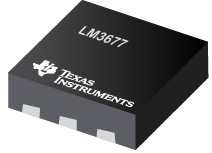The big question with electric motors: rewind or replace?

Electric motor failure is a very real and can be a common occurrence, even though we do all we can to prevent it. So when it does strike, it can be hard to know what to do. As business down-time and losses mount, it’s very easy to make a panicked decision over whether to rewind and repair or replace your motor.
Motor owners are faced with a conundrum. With new high-efficiency motors available, do they take the plunge and invest in a whole new motor altogether that promises higher efficiency levels but with significantly greater costs? Or, do they commit to a motor repair or rewind? While the cost is often lower, many are concerned about the potential inefficiencies that an electric motor rewind can bring — yet are these worries grounded in fiction?
The belief that motor inefficiencies stem from rewinds have developed from a small selection of studies that examined smaller motors. It is claimed that carrying out a rewind can drop efficiency by between 1% and 5% each time it is rewound. Considering the associated expense and sheer volume of energy these motors use, this is naturally concerning. However, more recent research has countered these findings.
A study by EASA and AEMT conducted tests in association with Nottingham University involving 22 new motors from 50-300hp. Overall, the results found that when electric motors were rewound using good practice, there was no significant change in the efficiency of the motors. However, in some instances, efficiency actually increased. This clearly dispels the belief that a rewind is actually detrimental to a motor’s performance.
Rewind, repair or replace: the key questions
So with this in mind, jumping in with both feet and investing in an expensive electric motor may not be necessary. Of course, in cases of catastrophic failure, this may be your only option. However, it’s very important to fully evaluate your options to make sure you make the right choice in terms of operation, cost and efficiency. This can be done by asking a number of key questions, as explained by Houghton International.
Is your electric motor suitable for purpose?
Your operational needs can change over time, so a historic electric motor may no longer be suitable. Review the scale of the damage alongside the requirements for the motor’s processes and duty cycles. If the motor is no longer suitable or too damaged, your option is to replace the motor.
What condition are the stator core and rotor in? If your motor still remains suited to its application, the next step is to check the stator core and rotor. If significant damage is present, it may be more beneficial to purchase a new motor, as depending on the extent of the damage, repairs can be costly.
If your motor still remains suited to its application, the next step is to check the stator core and rotor. If significant damage is present, it may be more beneficial to purchase a new motor, as depending on the extent of the damage, repairs can be costly.
However, you will need to weigh up your options when it comes to buying a new motor. For example, if the lead times for the motor you need are long, you may to decide to repair rather than replace to minimise downtime.
Are other mechanical parts damaged?
The shaft, frame, bearing housing and other mechanical parts may become damaged during motor failure. Examine the extent of the damage; you may be able to replace the affected parts at a lower cost than replacing the entire motor.
Is it an EPAct or Nema Premium motor?
Of course, motor failure may give you the reason to upgrade to a more efficient model. If you are considering making the investment, make sure you fully understand the return you’ll receive from doing so. Consider the energy savings you’ll make alongside the expected life of the motor and its hours of operation. Always consider your overall budget too, to make sure the replacement aligns with your current financial position.
However, if you’re happy with the efficiency your motor delivers, repair by a qualified service centre will not lead to a dramatic drop in efficiency, as we have discussed.
By asking yourself the above questions and ultimately considering your operational needs, budget and timescale, you can make the right choice between repairing, rewinding and replacing your electric motor.
Similar articles
More from Houghton International
- Don’t put maintenance on the backburner 13th May 2021
- How static motor testing can support preventative maintenance 24th March 2021
- Newcastle engineering business celebrates record year 21st March 2019
- The financial impact of machine down-time on UK industry 12th February 2019












Write a comment
No comments